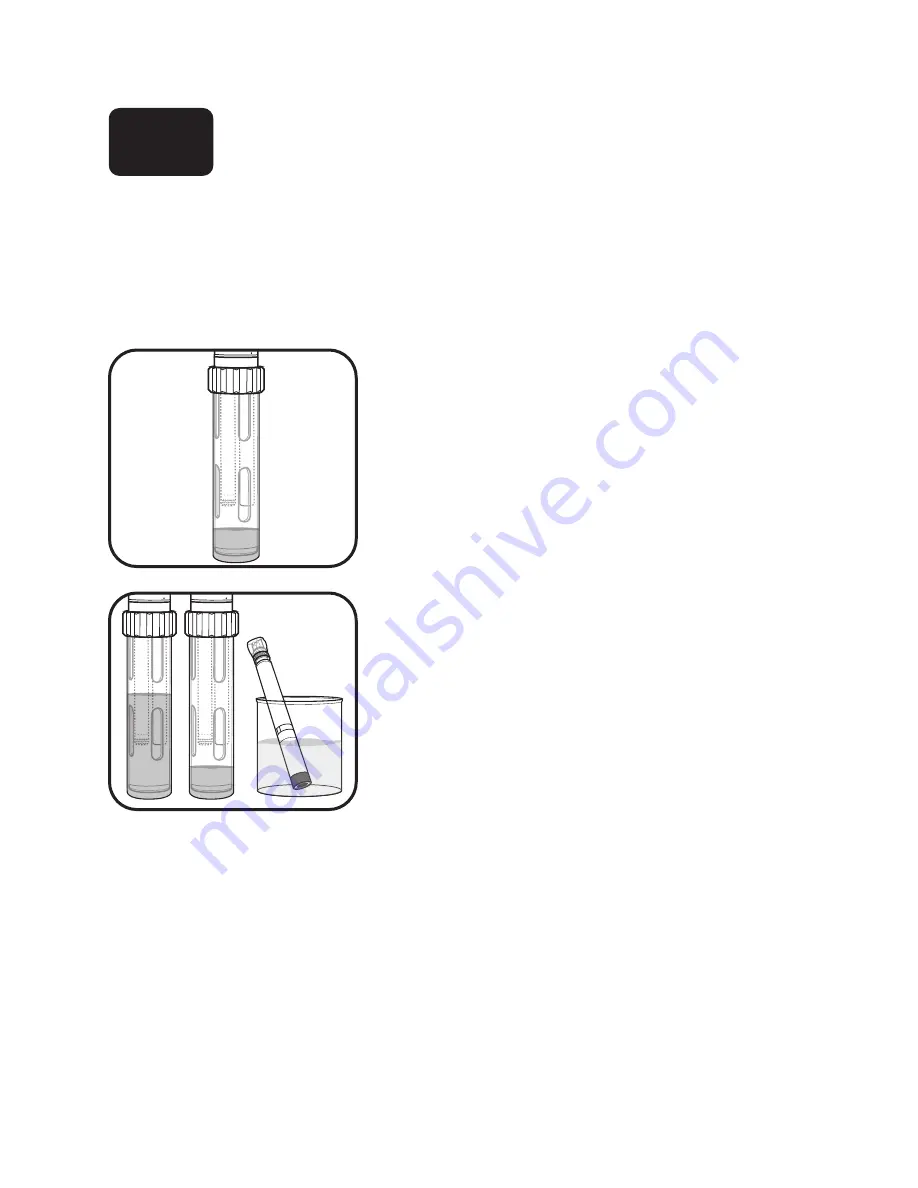
pg
|
96
Dissolved Oxygen Sensor
Storage
EXO DO sensors require separate storage instructions from other optical sensors due to their sensing
membranes. This section will identify storage as “long-term” or “short-term.” Long-term denotes storage
during times of long inactivity (over winter, end of monitoring season, etc.). Short-term denotes storage
during times the sonde will be used at a regular interval (daily, weekly, biweekly, etc.).
1 Short -term storage
When in regular field use, the ODO sensor should remain
installed on the sonde. Place approximately 0.5 in (1 cm)
of any water (deionized, distilled, tap, or environmental)
in the bottom of the calibration cup. Insert the sonde
and sensor into the cup and screw it on tightly to prevent
evaporation. (More information in “Short-Term Sonde
Storage” section.)
2 Long-term storage
Leave the sensor installed in the sonde, and submerge it in
clean water in the calibration cup. Screw the cup on tightly
to prevent evaporation. Users may also store the ODO
sensor by itself in two ways. One, submerge the sensing end
of the sensor in a container of water; occasionally check the
level of the water to ensure that it does not evaporate. Two,
store the sensor in water-saturated air.
We do not recommend storing the sensor with the
connector end unmated or exposed. If unmated, cover with
plastic connector cap.
6.11
















































